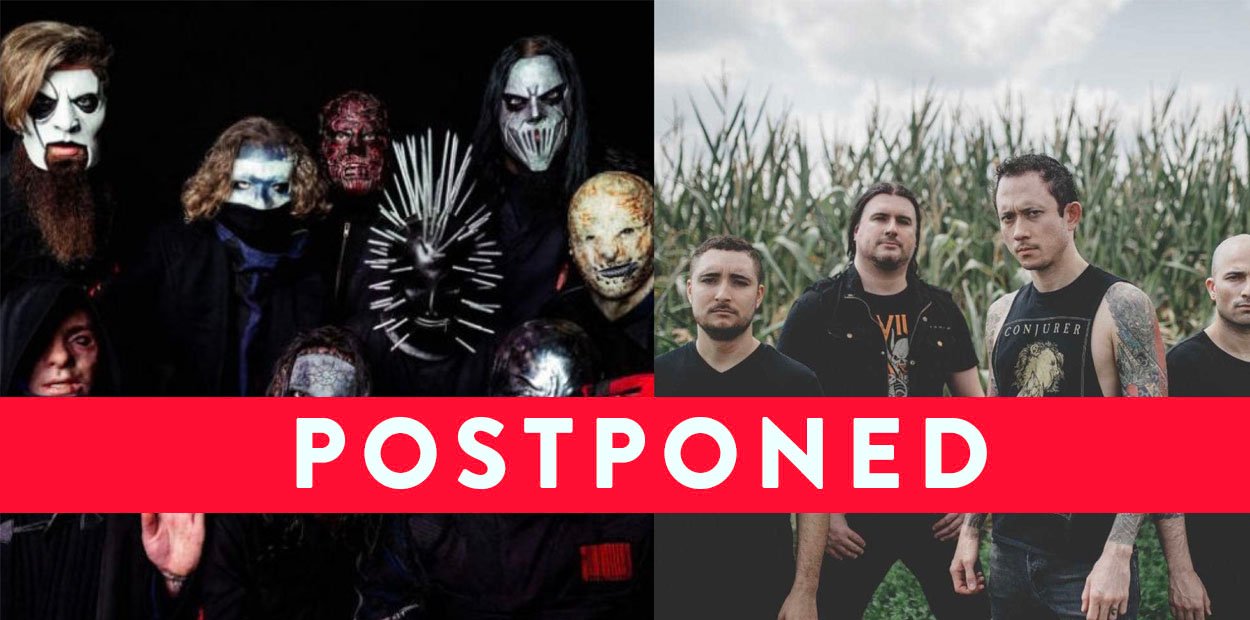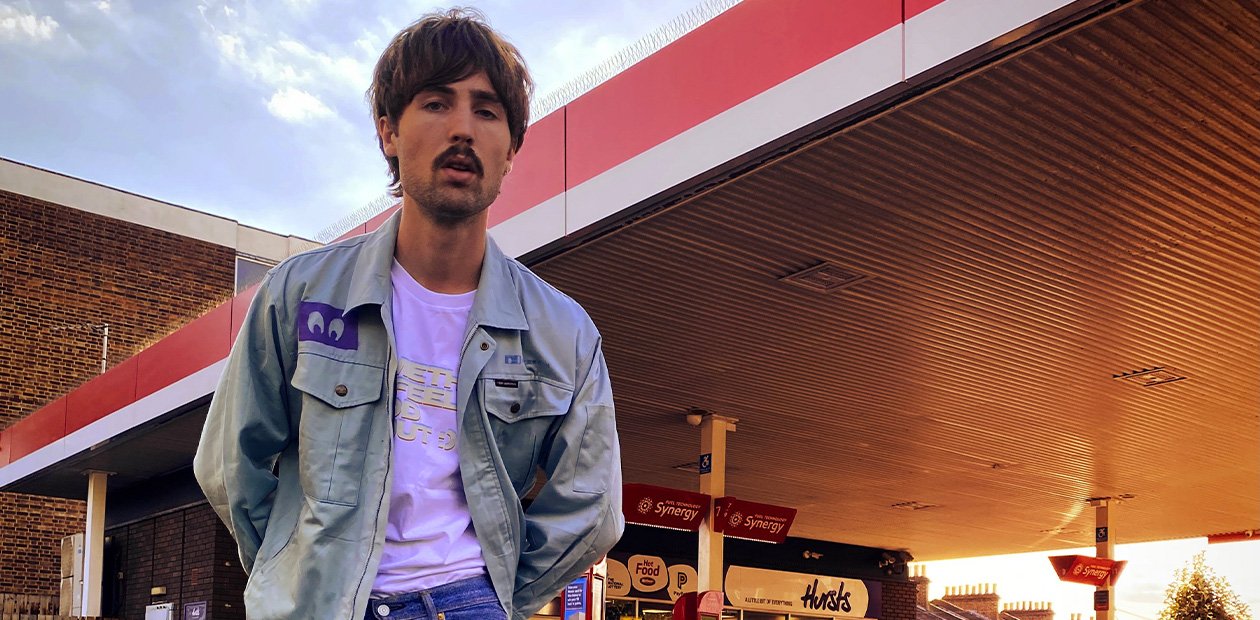A Dizzying Descent into Sonic Bliss:
Shoegaze and Dream Pop, genres that emerged in the late 1980s in the United Kingdom, have woven their ethereal textures and sonic landscapes into the fabric of contemporary music far beyond their origins. Initially, these genres might have seemed like fleeting whispers against the backdrop of their time’s more dominant rock and pop narratives. Yet, their influence has proven both enduring and expansive, reaching into corners of the world one might not immediately associate with them, such as Southeast Asia. Understanding this influence requires delving into the history of Shoegaze and Dream Pop and tracing their subtle yet significant impact on newer artists across the globe. But before we dive into the exciting world of shoegaze and dream pop, let’s embark on a sonic journey through their distinct characteristics and historical evolution.
What is Shoegaze?
Was it called as it is because of performers looking down at their shoes? Or are they just making sure they’re stepping on the right guitar pedal? There is no concrete reason or definition on why everyone calls shoegaze “shoegaze.” Often associated with bands like My Bloody Valentine, Slowdive, and Ride, the genre emerged in the late 1980s, drawing inspiration from post-punk, noise-rock, and psychedelic music.
Shoegaze’s signature sound lies in its heavy reliance on effects pedals. The use of fuzz, distortion, and reverb to create walls of sound that envelop the listener is a given. The guitars become the driving force, often drenched in feedback and layered heavily, creating a thick sonic tapestry. Often buried beneath the instrumentation, vocals add a sense of mystery and emotional depth.
In contrast, others suggest it reflects the music’s introspective and sometimes self-absorbed nature. Regardless of its origin, the name perfectly captures the genre’s ability to create immersive and introspective soundscapes.
What is Dream Pop?

Lush
Picture yourself floating on a cloud of sound, carried away by ethereal vocals and shimmering guitars. Lush, layered soundscapes wash over you, creating a hypnotic and dreamy atmosphere. This is the world of dream pop, a genre born in the 1980s with bands like Cocteau Twins, Mazzy Star, and Lush at its forefront.
Dream pop creates a familiar and otherworldly soundscape, drawing inspiration from shoegaze’s sonic textures and blending them with psychedelia and atmospheric music elements. Reverb-drenched vocals, often sung in hushed tones, float above shimmering guitars and keyboards, weaving a spellbinding tapestry of sound.
Unlike shoegaze’s aggressive tendencies, dream pop embraces a gentler approach. Melodies are often more accessible, and the overall atmosphere is beautiful and tranquil. Yet, an underlying sadness and melancholic undercurrent give the genre depth and emotional resonance.
The Intersection of Shoegaze and Dream Pop:
While seemingly distinct, shoegaze and dream pop often share many sonic features. Both emphasize atmosphere and texture, relying heavily on effects pedals and layered instrumentation to create immersive soundscapes. The lines between the two can sometimes blur, with bands like Slowdive and Chapterhouse exploring both territories.
What truly differentiates these genres lies in their emotional intensity. Shoegaze tends to be more aggressive and confrontational, while dream pop embraces a gentler, more reflective approach. However, their shared sonic palette and ability to create captivating soundscapes ensure their enduring appeal and ongoing influence.
A Symphony of Effects:
The signature sounds of shoegaze and dream pop wouldn’t be possible without the crucial role of echo, delay, and reverb effects. These effects create layers of texture and ambiance, blurring the lines between instruments and vocals.
Echo

Echo Pedals
Repeats a signal with gradually decreasing volume, adding depth and spaciousness. Shoegaze utilizes echo on guitars and vocals to create swirling, hypnotic soundscapes.
Delay

Delay Pedals
Similar to echo, but with adjustable delay time, allowing for intricate rhythmic interplay and textural variations. Bands like My Bloody Valentine and Slowdive masterfully layered delays to create their signature dense sounds.
Reverb
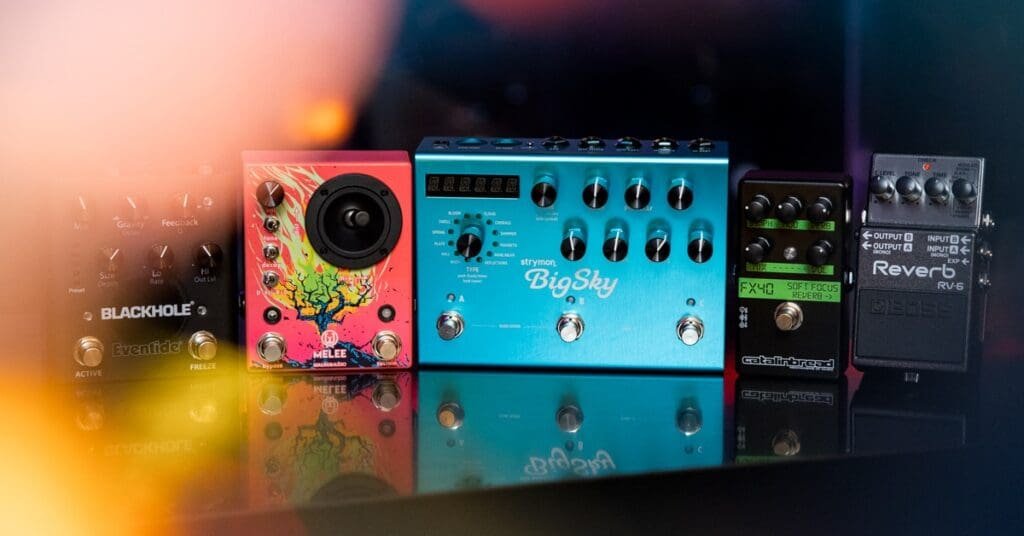
Reverb Pedals
Simulates the natural reverberation of sound in a space, adding atmosphere and dreaminess. Dream Pop heavily relies on reverb on vocals and instruments, creating a hazy and ethereal quality.
The interplay of these effects, combined with distorted guitars and ethereal vocals, defines the sonic magic of shoegaze and dream pop. Their influence resonates in modern music, reminding us of the enduring power of experimentation and sonic exploration.
The Notable Artists Of The Genre
The seminal bands of this era, My Bloody Valentine’s album “Loveless” and Cocteau Twins with “Heaven or Las Vegas,” are often cited as the pinnacle of shoegaze and dream pop, respectively. My Bloody Valentine’s innovative use of guitar effects and studio techniques created a sound so dense and immersive that it became the benchmark for shoegaze. On the other hand, Cocteau Twins, with their incomprehensible lyrics (often described as ‘glossolalia‘) and lush soundscapes, epitomized the dreamy quality of dream pop.
Ride, another key player in the shoegaze scene, brought a more melodic approach to the genre with their album “Nowhere.” Their sound was characterized by cascading guitar riffs and harmonious vocals, setting them apart from their contemporaries. Similarly, Slowdive’s “Souvlaki” is a masterclass in creating atmospheric soundscapes that envelop the listener, blending ethereal melodies with shoegaze’s characteristic wall of sound.

My Bloody Valentine
Lush, blending shoegaze and dream pop elements, navigated these genres with a pop sensibility that made their music accessible yet deeply textured. Their album “Split” is a testament to their ability to balance melody with noise, creating songs that are as catchy as they are sonically rich.
Galaxie 500, though often categorized separately, contributed significantly to the dream pop landscape with their minimalist approach to songwriting and production. Their music, characterized by slow tempos and reverb-laden guitars, laid the groundwork for many dream pop bands that followed.
The influence of these genres extended beyond the British Isles, inspiring a wave of American bands like The Jesus and Mary Chain, whose feedback-laden sound on “Psychocandy” predated the shoegaze movement but undoubtedly influenced its development. Similarly, Mazzy Star’s “So Tonight That I Might See” brought dream pop to American audiences with its haunting folk melodies and sparse arrangements.
As we delve deeper into the catalog of 90s shoegaze and dream pop artists, we uncover lesser-known but equally essential bands like Chapterhouse, Swervedriver, and The Boo Radleys (their albums Whirlpool, Raise, and Everything’s Alright Forever each made their mark). Each brought their unique take to the genres, from Chapterhouse’s danceable beats to Swervedriver’s rock-oriented approach and The Boo Radleys’ experimental soundscapes.
After The Heyday
The initial wave of Shoegaze and Dream Pop was relatively short-lived, with the rise of Britpop in the mid-90s drawing much of the media attention and audience interest away. However, the seeds were sown. These genres never truly disappeared; they simmered beneath the surface, influencing various artists across different genres and geographies.

Sigur Rós
The late 2000s saw a resurgence of interest in both genres, with new bands drawing inspiration from the sounds of the 90s. This revival demonstrated the lasting impact of Shoegaze and Dream Pop; their influence can be heard in indie rock (Beach House, Title Fight), post-rock (Sigur Rós, Blanket), alternative rock (My Vitriol, Hum), and even black metal (coined as blackgaze with artists like Alcest and Deafheaven). Notable artists mixing genre within their songs even include Deftones (listen to Be Quiet And Drive and that sweet, sweet section at the 30-second mark in Rats!Rats!Rats!). At the same time, some make it their main shtick with artists like Nothing, No Joy, A Place To Bury Strangers, Amusement Parks On Fire, Whirr, Narrow Head, and melodic hardcore-turned-shoegazers Hundredth. Since then, more artists have embraced “The Scene That Celebrates Itself.”
Asian Artists Push the Boundaries of Genre:
Japan’s tricot stands as a prime example of this creative fusion. Their sound seamlessly blends shoegaze textures with math rock and post-hardcore influences, resulting in energetic and dynamic songs that leave you breathless. Tracks like “POOL” and “INAI” showcase their masterful use of textured guitars, driving rhythms, and ethereal vocals, creating a unique sonic cocktail that transcends genre limitations.
Here are other notable Asian artists
South Korea:

Asian Glow
Parranoul: Blending dream pop with indie and electronica, creating ethereal soundscapes with introspective lyrics (Tracks: “Beautiful World,” “We Shine At Night“)
Asian Glow: They are our current artist of the month, so check them out here!
Japan:
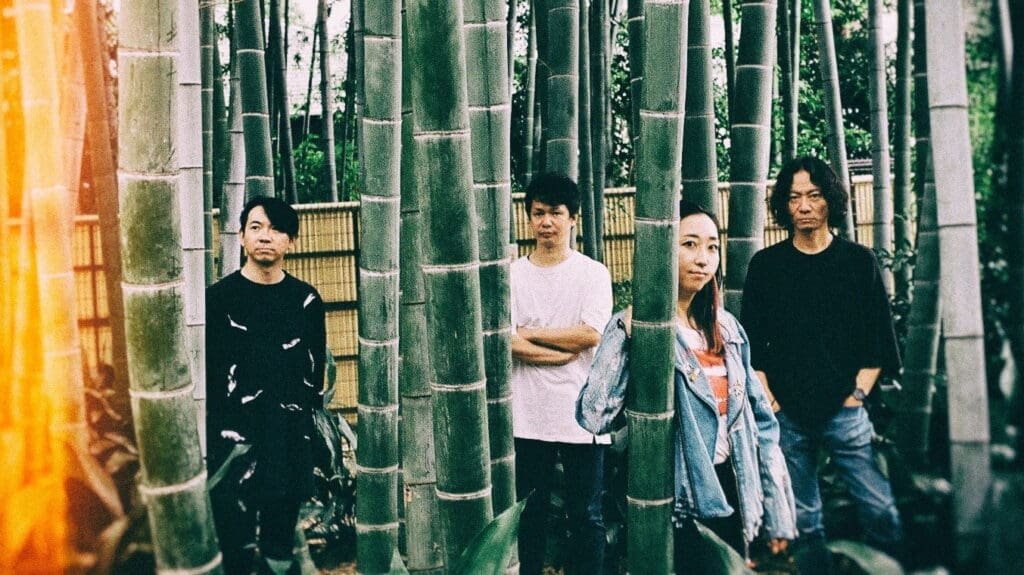
Tokyo Shoegazer
Luminous Orange: Mixing shoegaze with pop and ambient sounds, resulting in dreamy and layered instrumental tracks (Tracks: “Silhouette,” “Daydream“)
MONO: Post-rock pioneers incorporating shoegaze textures and ambient elements, creating melancholic and atmospheric soundscapes (Tracks: “Hymn to the Dead,” “The World Ends With You“)
Tokyo Shoegazer: Melodic dream pop with shoegaze influences, featuring lush guitars and ethereal vocals (Tracks: “Bright” “Constellations“)
China:
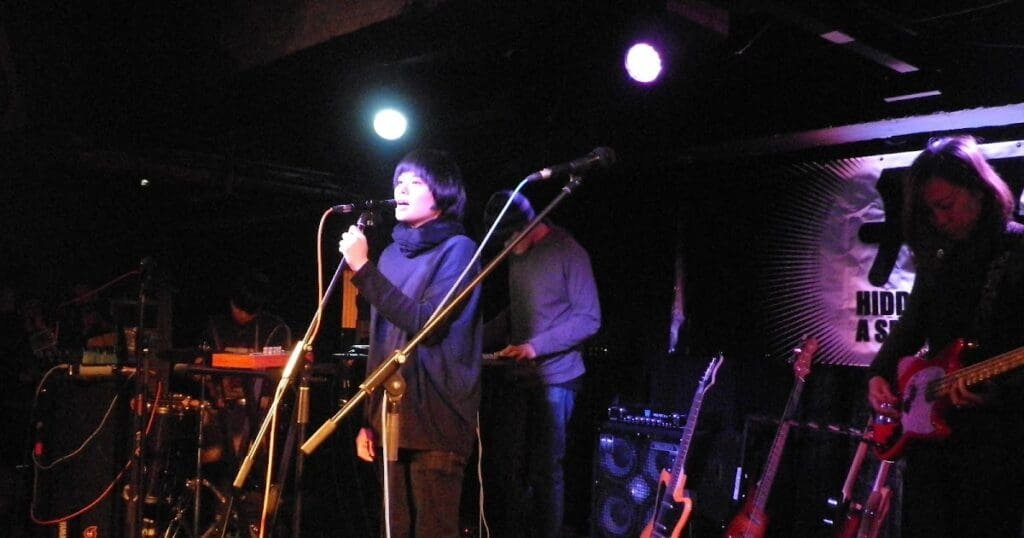
No One Remains Virgin
The White Tulips: Dream pop with strong shoegaze and noise rock influences, known for their energetic live performances (Tracks: “Lover In Osaka,” “1960“)
No One Remains Virgin: Glitchy lo-fi dream pop and indie rock, exploring themes of youth and self-discovery (Tracks: “When You Sleep,” “Before Independence“)
Forsaken Autumn: Dream pop with shoegaze and folk touches, exploring themes of nostalgia and melancholy (Tracks: “Limpid,” “Insane“)
Philippines:

Sugar Hiccup
Daydream Cycle: Dream pop outfit with hints of post-punk foundation known for their lovely guitar melodies and intensely hushed, sometimes overlapping vocals (Tracks: “My Luscious Star,” “Roses and Cadillacs“)
Candyaudioline: Blending shoegaze with noise rock and dream pop, resulting in chaotically sweet anthems (Tracks: “Your Smiling Eyes,” “Empty You“)
Sugar Hiccup: Shoegaze with strong dream pop tendencies, known for their catchy melodies and layered guitar textures. They are also named after a Cocteau Twins song. (Tracks: “5 Years,” “Womb“)
Sonnet LVIII: Lush dream pop with shoegaze undertones featuring layered vocals and instrumentation (Tracks: “Treasure Heaven,” “Oceans and Blue Skies“)
Exploring Further: A Sonic Adventure Awaits:
In conclusion, the journey of Shoegaze and Dream Pop from their origins in the UK to their influence on artists in Southeast Asia is a fascinating tale of resilience, transformation, and cross-cultural exchange. It underscores music’s universal language and ability to inspire innovation across time and space. As we continue to witness new iterations of these genres emerge from unexpected places, we’re reminded of the endless possibilities that await when we open ourselves to the world’s vast musical landscape.
But your sonic adventure doesn’t stop there!
For a curated, passport-free journey through the vibrant world of Asian music, including the latest shoegaze and dream pop treasures, head over to Asia Live 365. Our platform is your gateway to discovering independent and rising artists, exclusive interviews, and in-depth music features, all focused on the diverse soundscapes of Asia.


